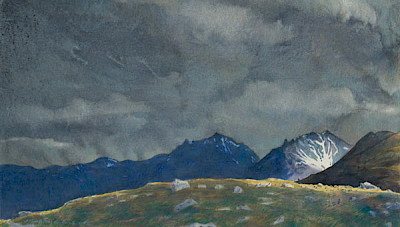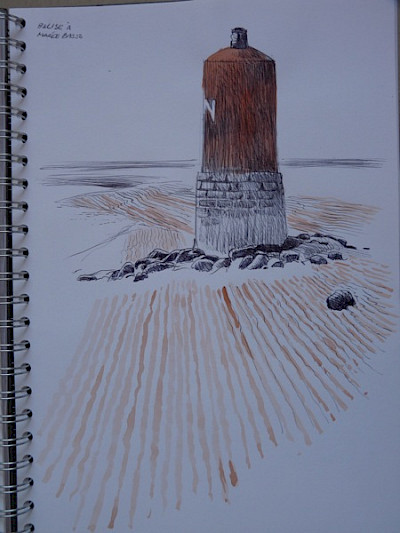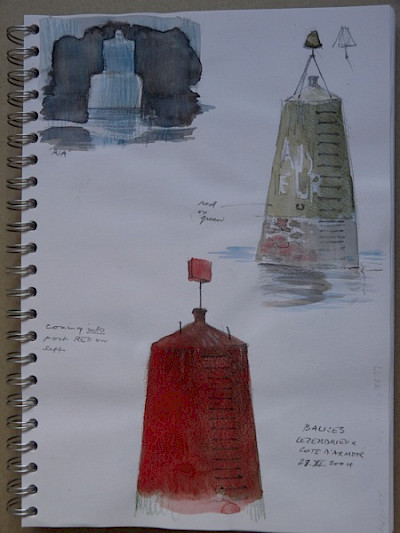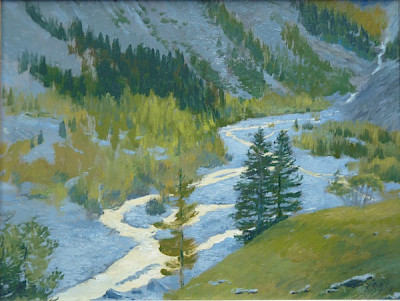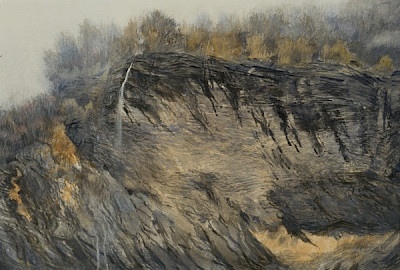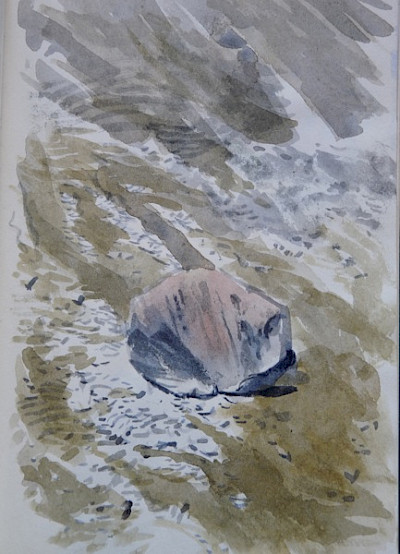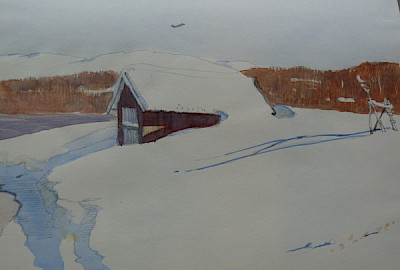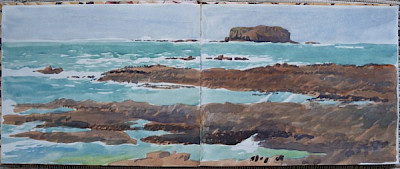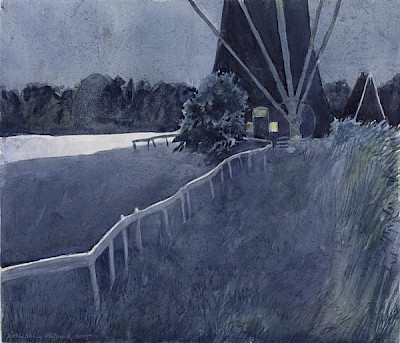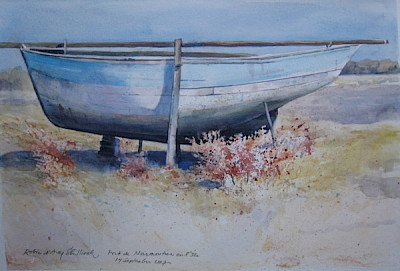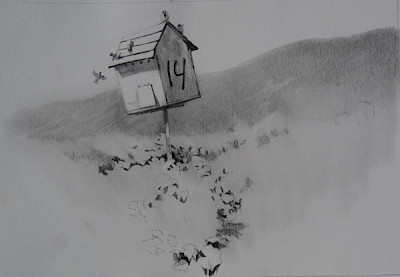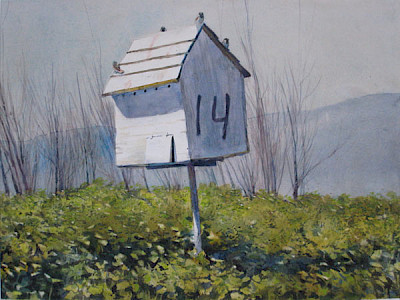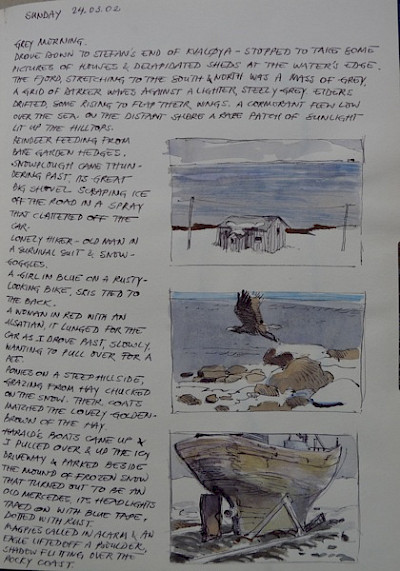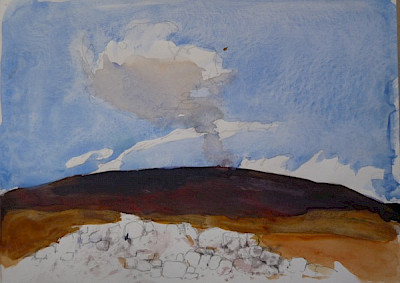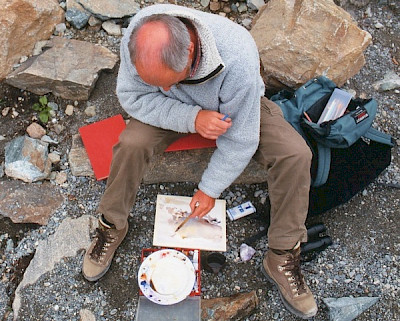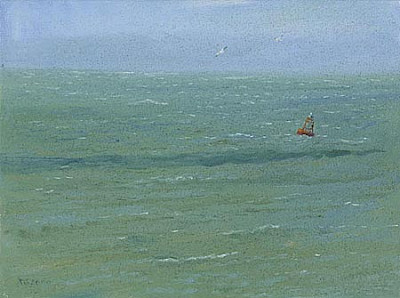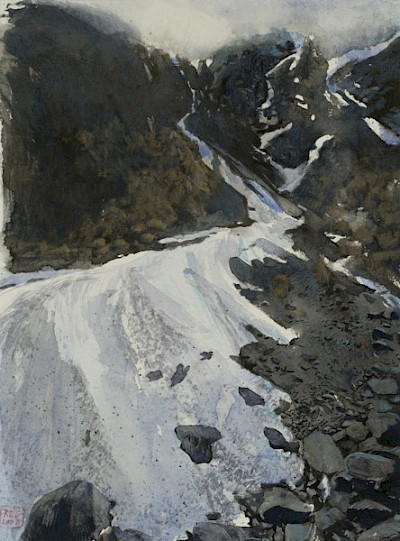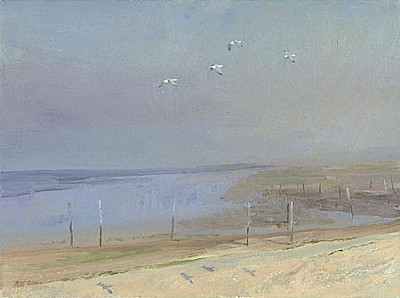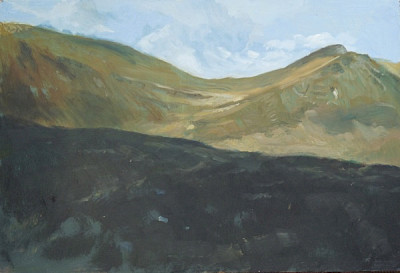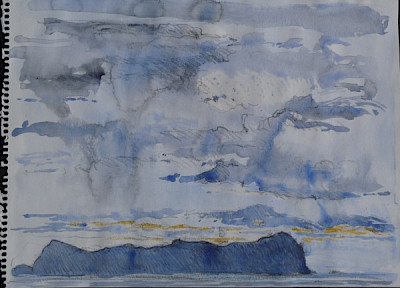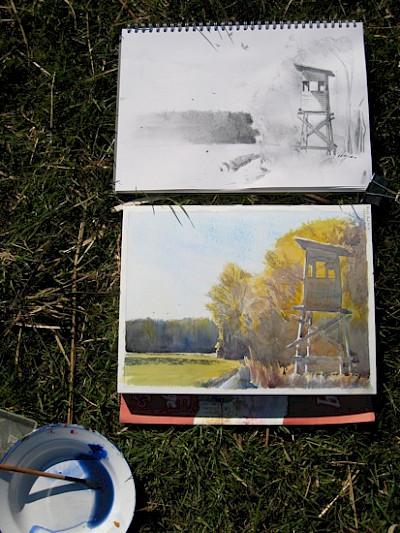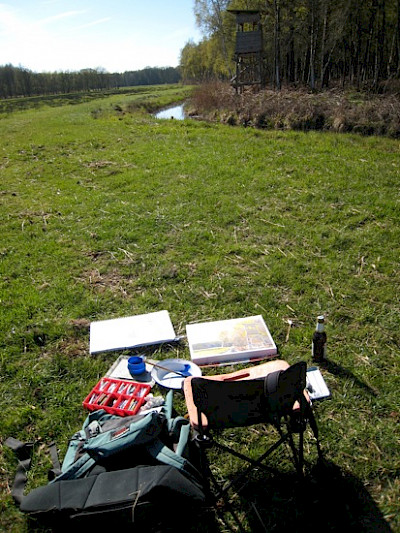Plein Air
Mark a spot before traversing the vastness of the plain. Follow arctic fox and blue hare, lie where the polar bear slept. Mark another spot, on the mountainside, and climb into the sky. What do you see? Waves gnawing at the coast, an inland burnished golden where kangaroos glide over their own shadows. Mark a spot on the green sea, row your boat; let go of the side, swim with dolphins and penguins.
First, there’s a facination for a place. Then there’s this need to hike, to get to know the lie of the land. Mysteries abide in the shadows of undercut riverbanks, in trees standing together as if in conclave, in the way a track winds through rugged terrain. Discovering a place with a sketchbook under my arm is one of my great joys in life. It is then I begin thinking about what a place means to me, of my being there. I want to return again and again. Being there is essential.
In the 70s and 80s I painted primarily with the motif in front of me, work begun and finished in the field, each painting an attempt at faithful representation of place, time of day and weather. In the 90s i went further afield, and shifted to developing paintings in the studio from sketches and watercolours produced in situ. My paintings began taking the place of what I saw, experienced and remembered. A process that may result in small, intimate paintings or large, panoramic canvasses up to three metres or more. Art is more than a painting in a frame. If you’re interested in what precedes what gets framed, read on.
In India painters sat in the street and brushed snake charmers and dancing bears onto paper in bright colours with long-haired brushes. My father talked about his uncle, a mysterious figure gone trapping in Canada before the Great War, later becoming a post-master and painter of landscape. All I ever saw were some Xmas cards & cartoons of Redskins Doing Dastardly Deeds. When staying with my Dutch grandma when I was seven, I watched a man across the road load up his bicycle with the strangest gear: an easel, a crate containing paint & brushes, a strangely-shaped table (his palette). Granny said this was Kees Bol the painter, at the time not yet an icon of Dutch plein air painting.
The sight of that gaunt man cycling off with his paint gear was immensely intriguing. When it became clear that my disinterest in mathematics closed many doors, the one open to me promised great freedoms — as a landscape painter.
Art school in the 70s a roller-coaster of ideologies, political, artistic, social. Concept vs. mimesis, with various factions at loggerheads. I escaped, biking into the country, my gear in my saddlebags, my border collie at a steady run by my side. Days of great freedom!
My choice for “painted reality" had much to do with a deep-felt wonder about nature’s intricacies, and a desire to share what I experienced with others. To me painting is always coupled to the outdoors, away from other people.
My aspirations have taken me through failure to achievement and back. One step ahead, two back, that’s the game. Walking is important, going slow. Problematic when faced with the wide open tundra or a coast that runs for miles. You just have to hoof it! Like needing to know about a model’s back when drawing the front, I want to know about the other side of a hill I’m painting.
Wanderings with a “backpack studio” took me to Scotland, the Wisconsin and Minnesota Northwoods. To the arctic: the Lofoten islands, to Svalbard with the 1997 Polar Bear Expedition, to Finnmark and Murmansk. To the rugged coasts of Ireland, Australia, New Zealand. And in March 2009 to the Hula Valley in the northern tip of Israel with 25 artists from eleven countries. Being an artist is not always a solo trip.
I have explored these places and loved being there. Being there evokes the urge to paint, painting connects me to that place. I study the terrain, try to envisage how the scene will look two hours on, how it will look in the morning, at night. I select a spot, perhaps after having gone in for a closer view. I make a sketch or two; decisions based on what I believe is good, trusting my judgment. And live with the consequences.
